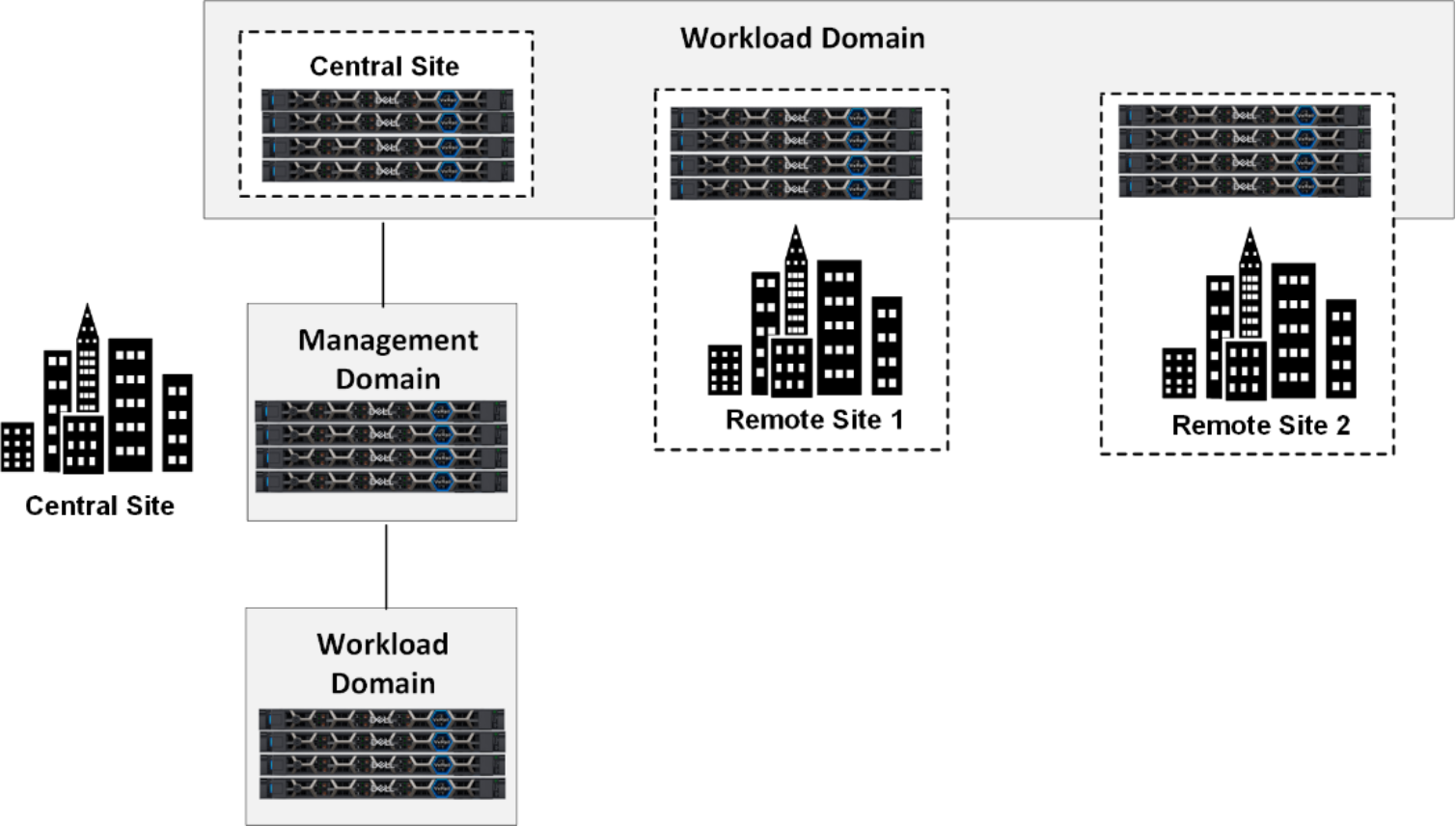Home > Integrated Products > VxRail > Guides > Planning Guide—VMware Cloud Foundation 5.1 on VxRail > Remote edge site considerations
Remote edge site considerations
-
Cloud Foundation on VxRail supports VI workload domains at end locations. The requirement for multiple remote site locations impacts the overall high-level design. It is important to consider factors such as distance and the quality of the network between sites.
- Cloud Foundation on VxRail supports a maximum of 8 VI workload domains with one remote cluster, the maximum number of Remote Clusters per VI Workload domain is 1.
- The management of multiple sites from a single management instance has network guidelines that must be met for supportability.
- Network Latency between SDDC Manager and remote VCF VI workload domains or clusters. Network bandwidth availability should be 10Mbps. Recommended maximum round-trip network latency. Exceeding this limit might impact the stability and responsiveness of the system. If you choose to exceed the limit, perform extensive testing to establish whether the performance impact is acceptable. The actual impact of latency on performance depends on many factors and might vary significantly between environments.
- A VI workload domain can include local clusters or a remote cluster, but not both.
- The migration of virtual machines between sites using vMotion has network guidelines that must be considered for supportability.
- Both private and public WAN connections are supported for Cloud Foundation on VxRail provided compatibility requirements are met.
- Considerations for SD-WAN are merited for deployments spanning across multiple remote sites.

Figure 23. Support for remote sites over Internet and private networks
Primary and secondary active WAN links are strongly recommended. Without network redundancy, you might encounter conditions that can lead to failure states such as a two-failure state condition, which can result in unrecoverable virtual machines and application failure.
With VMware Cloud Foundation on VxRail, you have the option to expand a VI workload domain at the central location by adding VxRail clusters at either local sites or remote sites. The same networking rules that apply for a multi-site workload domain are applicable for a VI workload domain deployed at a remote edge site.

Figure 24. Multi-site workload domain
